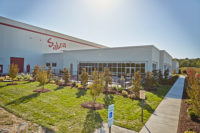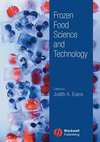Why the Frozen Food Industry Should Consider LEED Certification




The frozen food industry is battling a public perception problem. Even though advertisers increasingly use the word “fresh” to entice consumers, sales still continue to slip. Meanwhile, frozen foods suffer from a branding problem, as buyers assume they are processed and bad for their health.
The cold food industry should take this opportunity to consider its own frozen food processing facilities. Sustainable facilities communicate a message of cleanliness and a positive impact on the environment and human health. And, a LEED rating serves as marketable validation that a facility was designed to meet a certain level of performance.
As large facilities with heavy resource loads and custom processes continue to grow, satisfying all the LEED pre-requisites and credit requirements may seem a bit daunting. However, more and more processors are successfully achieving high levels of certification.
Communicate early. One of the most important steps is to communicate the LEED goal early in the design process to the entire team. This ensures that everyone is aligned to a common set of goals and keeps sustainability strategies in mind when making decisions.
While site selection for a plant is driven by logistical advantages and incentives, it is during this stage that the acquisition team has the most leverage to negotiate public transportation access at the site. Similarly, synergies for water resource sharing and energy resource sharing either with the city facilities or with other high-energy and water use buildings around the site have a high chance of success when negotiated early in the project life cycle.
During the construction phase, LEED has requirements for construction waste management and regional and recycled content construction materials, as well as best practices for indoor air quality management. It is pertinent that the construction team is aware of these requirements well in advance, so they can communicate with their sub-contractors and vendors as needed.
Focus on human health. While energy use and carbon reduction is still an important driver in the high-performance building market, a current trend is to place more focus on the well-being of occupants inside the building. This strategy can benefit a frozen food processor in a number of ways—healthier, happier employees will be more productive and call in sick less often. In addition, a healthy plant can be a brand differentiator.
One of the LEED pre-requisites concerns the provision of sufficient fresh air to the occupied spaces in a project. The aim of this pre-requisite is to continuously remove contaminant buildup and make the factory floor healthier for its workforce.
Daylighting is another focus of LEED. Frozen food facilities usually have the advantage of vast roof area with the possibility of bringing in the best-quality daylight to the space.
Frozen food facilities also typically use a large amount of refrigerants. LEED disallows the use of CFC refrigerants to minimize a facility’s direct contribution to stratospheric ozone depletion. In addition, LEED provides credit for selecting low GWP (global warming potential) and low ODP (ozone depletion potential) refrigerants. A recent trend has been to use CO2-NH3 cascade systems, which not only reduce direct contributions to climate change, but also reduces costs associated with safety and risk management of refrigerants by containing ammonia to the machine rooms.
Improve operational cost margin. Operational costs are a critical component of the food manufacturing industry business model. LEED requires a minimum of 10% energy use reduction, 10% water use reduction and provides points for incremental increase in water, energy and waste reduction. LEED certification provides accountability as well as a streamlined approach to set reduction goals, track estimated performance during the design process and at startup, to back check against the project reduction goals. Tracking water, energy and waste reduction goals using a “cost per product” key performance indicator is most useful.
Pursuing LEED for a frozen food facility can seem challenging, but with some front-end strategies and special attention to a few of the pre-requisites, a frozen food production facility can successfully achieve a third-party certification that is widely recognized and aligns with both company mission and business objectives.
Looking for a reprint of this article?
From high-res PDFs to custom plaques, order your copy today!










